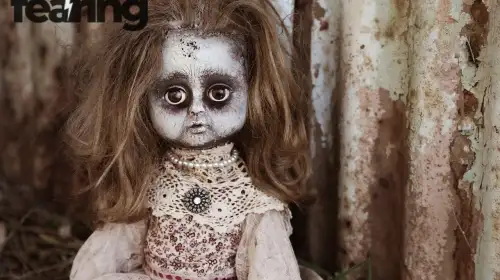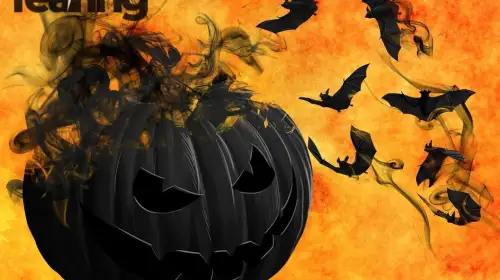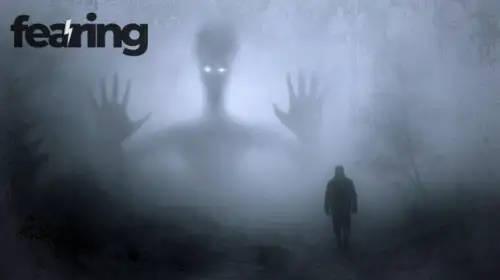Scary Stories have always followed humanity like shadows. They whisper around campfires, echo through literature, and glow from our screens late at night. In 2025, fear has evolved — yet our appetite for it remains endless. Whether it’s folklore passed through generations or psychological horror crafted by modern writers, scary stories reveal as much about our fears as they do about ourselves.
Author Neil Gaiman once said, “Fairy tales are more than true — not because they tell us dragons exist, but because they tell us dragons can be beaten.” Scary stories do exactly that: they let us face the darkness safely.
The Roots of Fear
The tradition of storytelling as a tool for fear dates back to the earliest civilizations. Myths warned villagers of demons in the woods, while medieval legends described restless spirits punishing the wicked. In 18th-century Europe, Gothic novels like Frankenstein and Dracula turned fear into art, merging horror with science and morality.
Cultural historian Dr. Helen Fisher explains, “Every scary story carries the fingerprint of its time. What terrified Victorians — disease, death, madness — isn’t the same as what scares us today. But the need to be scared? That’s timeless.”
Classic Scary Stories That Defined the Genre
Some tales survive centuries because they tap into primal emotions — loneliness, guilt, the fear of the unknown. Here are a few that still define modern horror:
| Title | Author | Year | What Makes It Enduring |
|---|---|---|---|
| Frankenstein | Mary Shelley | 1818 | Blends science and morality — fear of human ambition |
| Dracula | Bram Stoker | 1897 | Introduced the eternal outsider as a symbol of forbidden desire |
| The Tell-Tale Heart | Edgar Allan Poe | 1843 | Guilt as the ultimate ghost |
| The Monkey’s Paw | W.W. Jacobs | 1902 | Punishment for tempting fate |
| The Lottery | Shirley Jackson | 1948 | Horror in conformity and community violence |
Writer Stephen King summarized their power best: “Monsters are real, and ghosts are real too. They live inside us, and sometimes, they win.”
Modern Horror and the Digital Age
The 21st century brought a new kind of scary story — one told through screens and algorithms. Social media myths, viral creepypastas, and AI-generated horrors have replaced bedtime ghost tales. Stories like The Backrooms and Slenderman blur reality and fiction, spreading fear through digital folklore.
According to the Cultural Analytics Journal (2025), over 42% of Gen Z readers consume horror primarily through online platforms like Reddit and YouTube. Psychologist Dr. Chris French notes, “Digital horror taps into our loss of control — we never know what’s real online, and that uncertainty itself is terrifying.”
The Psychology of Why We Love Fear
Fear is a paradoxical pleasure. When we’re safe, our brains process fear as excitement — the same chemical reaction linked to thrill and reward. Horror triggers adrenaline, endorphins, and dopamine, making it addictive.
Neuroscientist Dr. Dean Burnett explains, “We watch horror to rehearse survival. It’s evolutionary theater — our bodies learn what danger feels like without the consequences.”
This explains why people who enjoy horror movies often describe feeling “cleansed” afterward. Fear, in controlled doses, gives us mastery over chaos.
Folklore and Urban Legends
Europe and beyond are filled with terrifying folktales that refuse to die. Each region has its own unique mythology:
Scandinavia: The Mare, a ghostly figure that sits on sleepers’ chests, causing nightmares — origin of the word “nightmare.”
Germany: The Erlkönig, a forest spirit who lures children away with song.
Japan: The Kuchisake-onna, or “Slit-Mouthed Woman,” who asks, “Am I beautiful?” before revealing her horrific face.
Mexico: La Llorona, the Weeping Woman who searches for her drowned children by riversides.
Turkey: The Alkarısı, a restless spirit blamed for sleepless nights and lost infants.
Folklorist Dr. Sarah Bartlett says, “Folklore is psychology wrapped in ritual. We invent monsters to explain what logic can’t.”
Modern Scary Stories That Redefined Fear
New authors are reinventing the genre by mixing horror with philosophy, social commentary, and existential dread.
| Title | Author | Year | Theme |
|---|---|---|---|
| Bird Box | Josh Malerman | 2014 | The horror of unseen fear and motherhood under pressure |
| The Haunting of Hill House | Shirley Jackson | 1959 | Psychological decay and loneliness |
| Mexican Gothic | Silvia Moreno-Garcia | 2020 | Colonialism and horror in Latin America |
| House of Leaves | Mark Z. Danielewski | 2000 | Infinite space, unreliable narrative |
| The Fisherman | John Langan | 2016 | Grief as supernatural curse |
Book critic Evelyn Chase observes, “Modern horror isn’t about monsters chasing us — it’s about what happens when we stop running and realize the monster is us.”
The Role of Storytelling in Healing
Despite their dark themes, scary stories often serve therapeutic purposes. They allow readers to face collective fears — from death to alienation — in symbolic form.
Clinical psychologist Dr. Ibrahim Kaya explains, “Horror externalizes anxiety. When you name your fear — whether it’s a ghost, a shadow, or a curse — you take power back from it.”
This is why children’s spooky stories persist, from Coraline to Goosebumps. They teach courage through imagination.
Scary Stories Around the Fire
In many cultures, storytelling remains a communal ritual. In rural parts of Ireland, Scotland, and Eastern Europe, villagers still gather to share ghost tales during autumn festivals.
Traveler Lena Ortiz recounts, “In a tiny Czech village, I sat by a bonfire while an old man told stories about spirits in the forest. Everyone laughed — but no one wanted to walk home alone.”
The shared act of listening in darkness connects us to our ancestors. Storytelling becomes survival — and laughter becomes a shield.
The Future of Fear
As technology evolves, so do scary stories. Virtual reality now lets users step into haunted environments that respond to their pulse and voice. AI-generated horror can craft tailor-made nightmares based on user data.
Tech analyst Marina Lopez warns, “We’re entering an era where horror knows your heartbeat. Fear is no longer one-size-fits-all — it’s personalized.”
This new wave of “intelligent terror” raises questions about ethics, privacy, and the limits of human emotion. Yet it proves that the oldest instinct — fear — adapts better than anything else.
Why Scary Stories Will Never Die
Scary stories endure because they give form to the formless — death, guilt, the unknown. Whether whispered in caves or written in code, they remain our oldest mirror.
Horror master Stephen King once said, “We make up horrors to help us cope with the real ones.” And in a world of uncertainty, that might be the most comforting thing about being scared — it means we’re still alive to feel it.
FAQ
Q1: Why do people enjoy scary stories?
A1: Fear triggers adrenaline and dopamine, creating excitement and relief once the threat passes.
Q2: What’s the difference between horror and thriller stories?
A2: Horror aims to evoke fear and dread; thrillers focus on suspense and tension.
Q3: Are scary stories harmful to children?
A3: When age-appropriate, they can actually build emotional resilience and teach coping mechanisms.
Q4: What’s the oldest known scary story?
A4: The ancient Mesopotamian tale The Ghost of Uruk (circa 2000 BCE) is considered one of the earliest recorded ghost stories.
Q5: Are modern scary stories still based on real events?
A5: Many are inspired by psychological truth or folklore, blending fiction with cultural fears.
Sources
New Scientist – The Neuroscience of Fear




